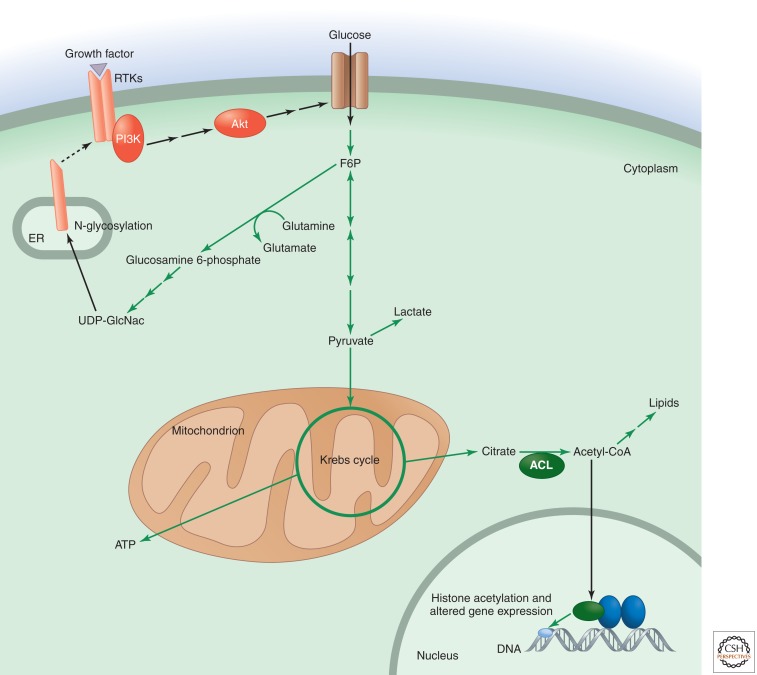Figure 5.
Hexosamine and acetyl-CoA metabolite levels integrate signaling with cell growth and proliferation. In addition to being metabolized through glycolysis, fructose 6-phosphate can act as a nitrogen acceptor from glutamine and be converted to glucosamine 6-phosphate. Further metabolism through the hexosamine biosynthetic pathway results in UDP-N-acetylglucosamine (UDP-GlcNac). UDP-GlcNac can be used for N-linked-glycosylation reactions, including that involving growth factor receptor subunits as they are being processed in the ER. This glycosylation promotes the expression and localization of receptor subunits at the cell membrane, where they can respond to growth factor. Another metabolically sensitive protein modification occurs when acetyl-CoA is used as a substrate for the acetylation of histones in the nucleus, a modification that alters gene expression. The supply of acetyl-CoA for acetylation reactions depends on the activity of ATP-citrate lyase (ACL).

